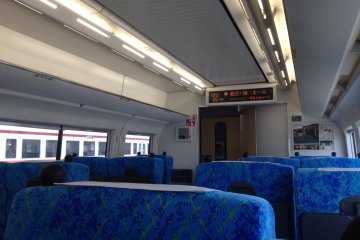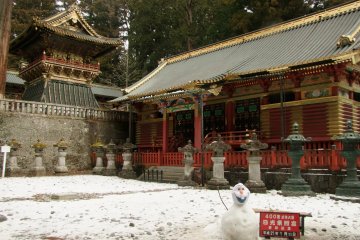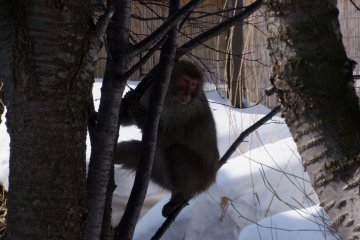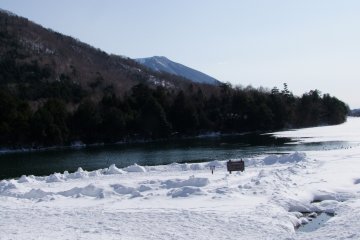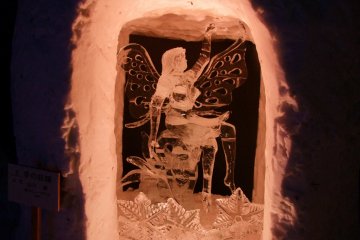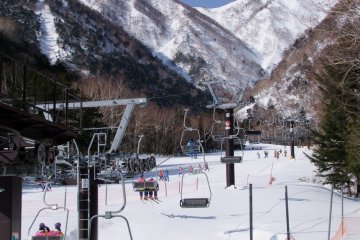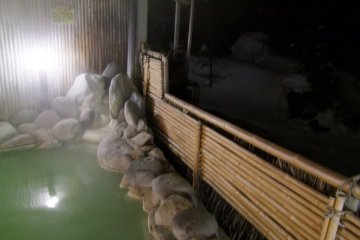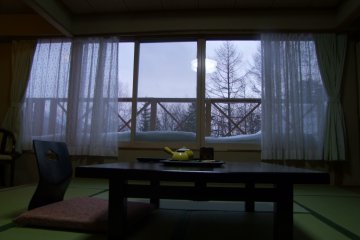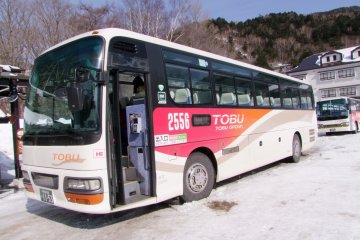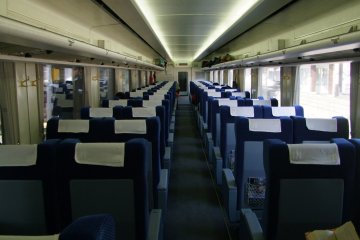In days past, the Taisho Emperor used to come to mountainous Nikko to escape the heat of Tokyo's summers. But the emperor's loss can be your gain: Nikko is positively gorgeous during the winter, and with plenty to do, see and eat, it should be on your list of must-see destinations come the snowy season.
Conveniently, Nikko is a short distance from Tokyo, making it an easy day trip. From Asakusa Station in Tokyo, Nikko can be reached in under two hours by using the silky-smooth "Spacia" limited express train on the Tobu Line.
But what can you do there? Plenty.
Nikko
- The city's most famous attraction is the Shrines and Temples of Nikko. The collection of UNESCO World Heritage sites can be enjoyed year-round, but takes on a special beauty in the snow. On a warm, sunny day in January, crowds were miniscule compared to the swarms of tourists that take over the area come summer. A winter visit can give you the authentic experience of what Nikko ought to be: a mountainside wonder to be enjoyed in peace and contemplation.
- Foodies, you're in luck, too. The Nikko region has a local delicacy perfect for winter. The streets are lined with shops and restaurants serving yuba, a healthy and delicious food made from the skin of heated soy milk. Yuba is found in many, many forms, but its most popular is in a nice bowl of hot noodles: ramen, udon, or soba, which is a great way to warm up on a chilly winter's day.
- For something a little faster paced, check out a professional ice hockey game. The Nikko Ice Bucks are a member of Asia League Ice Hockey and face off against teams from around Japan, China, Russia, and Korea. Their fanatical supporters rock the Nikko Kirifuri Ice Arena from September through the end of February, so be sure to check the game schedule to see when they're playing.
Yumoto Onsen
This quaint hot spring town is a bit off the beaten path, so use that to your advantage this winter.
- The town is built around a sulfurous natural hot spring that was discovered in the eighth century, and you can't go 10 meters in any direction without finding an incredibly relaxing hot spring bath (onsen). These aren't inner-city baths with hot water pumped in — this is the real McCoy, coming straight from the earth. There are numerous public onsen (as well as foot baths) available, including some incredible outdoor baths (rotenburo) with scenic views of the snowy backdrop of the town. Most hotels and ryokan provide free hot spring access to their guests.
- The Yumoto Onsen Snow Festival is held during January and February, and is on the must-see list. Jaw-dropping ice sculptures are housed in igloo-like snow domes called kamakura. The intricacy of the ice statues is stunning. The festivities are set off by a beautifully coordinated LED light and music display at night, which turns beautiful art into a surreal, dream-like experience. Best of all, the festival is free.
- In the 8th century, Priest Shodo (the founder of Nikko) discovered the natural hot springs in this area, and they have been taken advantage of ever since. In the corner of town, you can visit the Yunodaira Marsh, the fountainhead of the hot springs, where you can see boiling puddles forming on the ground. As the town's tourism depends on the onsen, it makes sense that there is a Hot Spring Temple (Onsen-ji) next to it, which is very pretty in winter. Keep your eyes peeled around this area, as wild monkeys are often spotted running around.
- Make use of the area's incredible natural beauty. During the winter, the ski and snowboard slopes of the Nikko Yumoto Ski Area are open for business and are just a short walk from the center of town, with plenty of rental shops around. Depending on snowfall, there are also plenty of incredible hiking trails leading in all directions, including around the bordering Lake Yu-no-ko, to many of the nearby waterfalls, and up the mountains.






